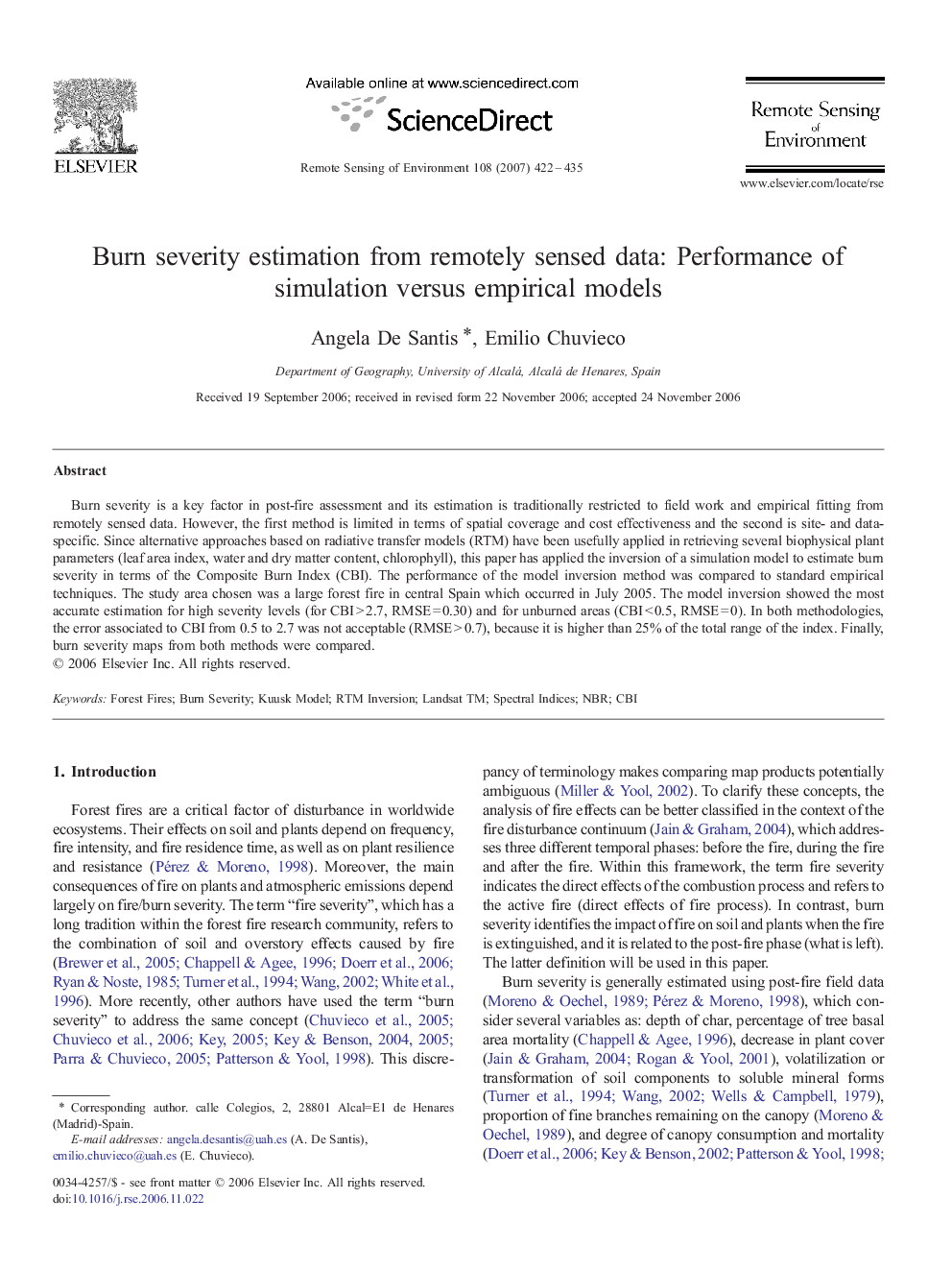| Article ID | Journal | Published Year | Pages | File Type |
|---|---|---|---|---|
| 4460727 | Remote Sensing of Environment | 2007 | 14 Pages |
Burn severity is a key factor in post-fire assessment and its estimation is traditionally restricted to field work and empirical fitting from remotely sensed data. However, the first method is limited in terms of spatial coverage and cost effectiveness and the second is site- and data-specific. Since alternative approaches based on radiative transfer models (RTM) have been usefully applied in retrieving several biophysical plant parameters (leaf area index, water and dry matter content, chlorophyll), this paper has applied the inversion of a simulation model to estimate burn severity in terms of the Composite Burn Index (CBI). The performance of the model inversion method was compared to standard empirical techniques. The study area chosen was a large forest fire in central Spain which occurred in July 2005. The model inversion showed the most accurate estimation for high severity levels (for CBI > 2.7, RMSE = 0.30) and for unburned areas (CBI < 0.5, RMSE = 0). In both methodologies, the error associated to CBI from 0.5 to 2.7 was not acceptable (RMSE > 0.7), because it is higher than 25% of the total range of the index. Finally, burn severity maps from both methods were compared.
